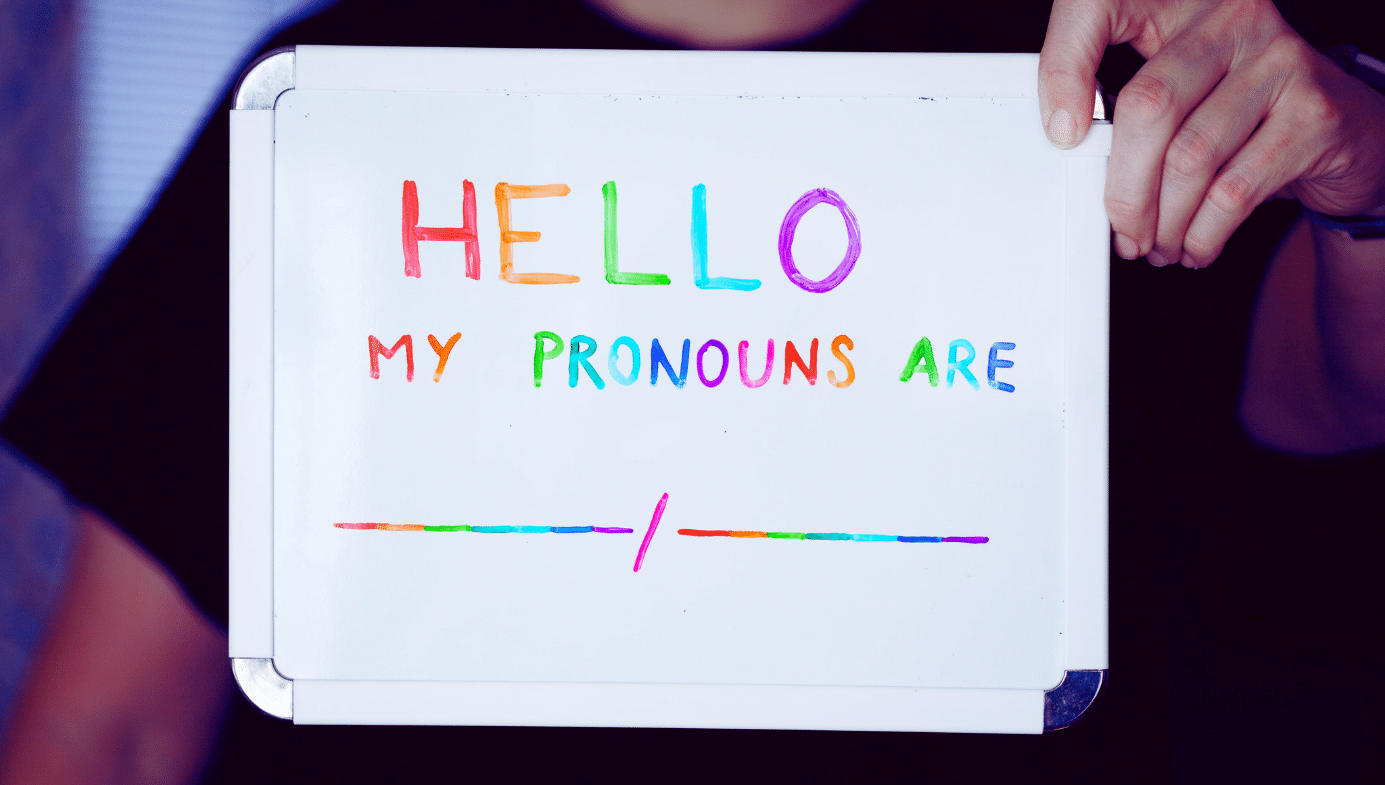Education
Tales From the Gulag
The administration, well-aware of these defamatory messages, did not refute them or even address their impropriety with the perpetrators of the misinformation.

A couple of weeks ago I published an article in the Wall Street Journal describing the tyranny that Diversity, Equity, and Inclusion (DEI) bureaucracies are imposing on universities and scientific institutions. This includes excluding talented scientists who are not effective enough in displaying their DEI allegiance, enforcing ideological adherence among faculty and students, and suppressing debate on the topics of merit, quotas, free speech, and a range of gender and race issues.
In that article, I gave a piece of partial evidence of the gulag-like environment currently existing in higher education. Numerous faculty responded to an earlier Wall Street Journal piece by me about ideological corruption in science, through emails in which they indicated they were writing under pseudonym accounts out of fear that colleagues or university officials might find out that they supported my concerns.
Happily, in response to my most recent piece, no respondents suggested they were shielding their identities, although a number indicated they were writing from their “non-university” email addresses—just in case—or felt comforted by now being retired and free to write. What they present, in summary, is a chilling perspective of the pervasive and divisive atmosphere that is continuing to develop in educational and scientific institutions. I felt it worth sharing a number of these perspectives, after having consulted the individuals involved. Unless otherwise directed, I have worked to ensure the anonymity of my correspondents.
Numerous correspondents wrote to me concerned about their specific areas of scholarship. Particularly worrying were emails from those in the medical and legal professions.
Here’s one from a professor at a very prominent US medical school:
Dear Dr Krauss,
Your op-ed in WSJ barely touched the problem of DEI in American biomedical science and clinical practice. The societies (e.g., Amer Society of Cell Biology) and the journals (esp Elsevier) are rife with DEImania. This is affecting clinical medicine. It is the death spiral of American medicine, with unintended consequences for the very groups it is supposed to help.
What can one do?

While this is concerned in more general terms with possible impacts on the field, a very poignant email from another professor in a biomedical field illustrates the personal impact that this environment of fear and suppression is taking on the psyche of scientific researchers:
I feel like the turtle in the picture with the neck out and about to get chopped ... It is strange to me that this is happening because I am a Hispanic woman with Spanish, North African, Chinese, and Native American ancestry that speaks four languages and has lived everywhere in the world, so I should be the pinnacle of what DEI is aspiring for. Nevertheless, I am experiencing the tyranny of DEI because it is not about diversity of race or sex but more about a loyalty test. This will not last forever, but the question is how much damage this will do ... This year has been an authoritarian year full of tyrannical mandates and intolerance. I have never experienced having moral (mandatory DEI trainings that forces me to affirm things that go against my conscience), medical, or religious tests in order to work before this year. Innovation and intellectual greatness come as a result of freedom. Suppression of speech and ideas will result in a reduction of greatness and innovation. Freedom of speech can only be real freedom if speech that we do not agree with is allowed. Let's include diversity of thought and ideology in what you want to protect.
Beyond academia, I wrote about the growing inhibitory impact of DEI mandates in scientific institutions, including private ones like the Howard Hughes Medical Institute. In this regard, I received the following email from an HHMI employee that sent shivers down my spine:
Dr. Krauss, I am a HHMI employee and I am grateful to you for your WSJ piece. The lowest point for me was February 8th this year, when all employees were expected to read Mediocre: The Dangerous Legacy of White Male America by Ijeoma Oluo. Ms. Oluo led a virtual talk that day for all HHMI employees. I trust that you know that the core motivation for HHMI’s DEI effort is to preempt any liability or negative press for two major discrimination lawsuits against HHMI by female Asian scientists. The journal Science covered these two lawsuits on 12/18/2019. Thank you again.
When it came to law schools and DEI, I received several emails from law school professors saying that the piece resonated with their own experience. I received two other legal-related responses that are of particular interest.
The first was from a student at a California law school. Several cases of law professors who have been caught up in unwarranted DEI adjudications of racism are well known and have been written about, including by me. However, the impact on their students is not so well known. Here is the email I received:
After reading your WSJ piece on “Diversity” as tyranny, I wanted to thank you for writing it. I know that took courage, especially in this political environment. Your discussion of “monomania” hit close to home. I’m a law student at [law school name omitted], and this week a brilliant torts professor has come under fire for baseless claims of racism. I wrote a letter to our DEI office defending him, though I doubt it will help.
The last line is particularly relevant because it points to the recognition, even by students such as this, that efforts to write in support of faculty who come under DEI investigation are generally ignored. This has certainly been the general experience of all faculty I have talked to. DEI offices are usually only interested in documenting complaints. They often don’t even document letters of support.
The other email came not from a law student, at least as far as I can tell, but someone who was a litigant in an affirmative action case. They wrote:
Lawrence, You might want to read a DOJ letter written in the aftermath of a US Supreme Court decision on “Adarand.” Note where it talks about eligible engineers. Thanks
Spurred by this note, I subsequently read two Department of Justice “Memoranda to General Counsels” related to the case of Adarand Constructors, Inc v Peña, in which the Supreme Court held that federal affirmative action programs that use racial and ethnic criteria as a basis for decision-making are subject to strict judicial scrutiny. Under strict scrutiny, such programs must serve a compelling governmental interest and must be narrowly tailored to serve that interest. There are several interesting comments in these memoranda that should be of interest to those who may wish to pursue legal relief in cases of concern.
One memorandum states:
An underrepresentation of minorities when compared to the general population or the general civilian labor force, however, would not be a sufficient predicate for the use of racial criteria in employment decisions when special skills or qualifications are required to perform the job … For example, if an agency or office sought to determine whether it had an underrepresentation of African-American engineers, it would not compare the percentage of African-American engineers that it employed with the percentage of African-Americans in the civilian labor force generally, or with the percentage of African-Americans in a “professionals” category of which engineers may be only a part. Since engineers possess unique qualifications not shared by the population or professionals at large, the comparison should be between the percentage of African-American engineers employed by the agency or office and the percentage of African-American engineers in the civilian labor force. Where the fit cannot be so precise, the agency should use the qualified labor force that most closely matches the agency's qualifications for the jobs at issue.
The other states:
Outreach and recruitment efforts conceivably could be viewed as race-based decision-making of the type subject to Adarand if such efforts work to create a “minorities-only” pool of applicants or bidders, or if they are so focused on minorities that non-minorities are placed at a significant competitive disadvantage with respect to access to contracts, grants, or jobs.
Respondents to my article were not limited to those in the US. I received a variety of personal examples of concern from correspondents in Canada.

A young researcher in a STEM field at Dalhousie University remarked on the impact of DEI on student course questionnaires. Of concern were new questions added at the request of the Dalhousie Student Union “to give students an opportunity to identify racist, sexist, homophobic, and any other oppressive content in course curricula and literature.” Specifically, one question asked students to comment on whether “The instructor did not include materials that contained offensive or discriminatory ideas except to educate students about discrimination, oppression, or educate about other existing perspectives.” This student sensed the dangerous possibilities inherent in such language and suggested it would elicit “anonymous reporting of hurt feelings, rather than an objective way to improve academic outcomes and reward effective teachers.”
I was also informed that, not to be outdone at Dalhousie, the Dean of the Engineering School there recently sent the following message to seniors, essentially “canceling” the early history of the school out of concerns of present day inclusion:
In the hallways of D and B building, the picture of graduating classes from the early Nova Scotia Technical College and TUNS days showed an engineering history of mostly white male students. We had received many comments about this not being consistent with the vision of a welcoming campus for all students. These class pictures have now been removed, archived with the help of Dal Libraries and will be available online in the future to alumni and others. Many of these wall spaces are now empty, but we will look for opportunities in the future to project a more diverse and inclusive vision of engineering.
From another Canadian university came a note from two science researchers which provides perhaps the most ridiculous example I have seen of how DEI statements are used to adjudicate grant applications. In this case, the grant was simply for a piece of scientific equipment, valued at $150,000, to be used by the scientists in their research. Yet, as one of them writes:
Yet even here for literally just an instrument, we have to write some DIE text … I am now forced to lie for the first time since age 7 when I stole the candy.
Returning to the US, one distinguished California scientist wrote to me about his confusion induced by DEI requirements regarding gender pronouns when writing a letter of recommendation for a scholarship for a promising high school student. As part of the recommendation form he was required to provide his pronouns. He claimed he spent some time navigating the form to determine if he was a “He/Him” or “He/His”. In his words “I didn’t dare get it wrong.”
I have saved the most egregious example of DEI abuse I was reminded of in response to my piece for last. In this case, it is not anonymous, as the faculty member in question is fighting for his livelihood following a remarkably vicious action by his university. The following came from David Porter:
Going through my e-mail files I realized it’s been a while since I’ve updated you on my case against Berea College.
Our discovery and deposition phase is now complete. Several weeks ago, we spent 5 hours with a $300/hour mediator. We were asking for $750k and emeritus status. Although the college had originally been open to considering emeritus status, after lunch, the president reported that this would not be acceptable to campus (without specifying with whom on campus he’d spoken). This (along with the fact that their idea was for a $200k settlement) effectively ended the mediation. Early the following week, the mediator contacted my lawyer and asked that we remain open, since the mediator, the college lawyer, and the law firm representing the college all agreed that emeritus status was appropriate and were trying to persuade the president…

I was suspended for publishing an academic survey of perceptions about academic freedom and hostile environments which contained some incidents and events that had occurred on campus – none of which were either “private” or “confidential.” These examples simply showed that the administration of Title IX issues was inconsistent and sometimes unfair. The chair of the IRB had worked closely with me in preparing the survey, advised me that because this was local rather than generalizable knowledge, used an anonymous response Qualtrics option, and was directly related to my course, formal IRB approval would not be required. (Under administrative pressure, he later changed his mind and disavowed having taken the position documented in his e-mails to me and the dean.) Along with my suspension, came an edict from the president not to communicate with students, not to come to campus without special permission, and not to use or share data from the survey. Exaggerated social media postings, mostly by students who had never been in any of my courses and faculty grievants and their allies, roiled the campus. An official message from one of the Faculty Advisor[s] to the SGA filled with false and defamatory information, thwarted the independent efforts of some of my students to award me with the Student Government Association’s Annual Student Service Award. The administration, well-aware of these defamatory messages, did not refute them or even address their impropriety with the perpetrators of the misinformation. The many breaches of due process over the 10 weeks until my hearing are described in this article. My tenure was terminated and I was dismissed from the college 30 Sep 2018. I suffered a stroke 14 November, 2018. I have been engaged in the legal battle ever since…
I thought your recent article in the Wall Street Journal was superb. This is a war we must win – not only [in] academia but our democracy depend[s] on it...
David’s final admonition should be a clarion call. What happened to him is indefensible, and only by speaking out about the abuses that my correspondents have described here can we try and dismantle the current strangle-hold that DEI bureaucracies have on researchers and students alike and restore academic freedom and excellence as the hallmarks of science and education.







